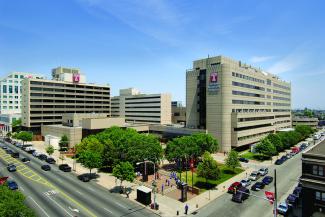Angioplasty and stenting are among the most common surgical treatments for peripheral arterial disease (PAD), a condition that occurs when hardened arteries prevent adequate blood from reaching the legs and feet. In addition to causing pain and numbness, PAD increases the risk of heart disease, heart attack and stroke.
An angioplasty is a surgical procedure that widens arteries in order to restore blood flow. The vascular surgeon inserts a thin tube called a catheter into an outer blood vessel and guides it through to the site of the problem. A tiny balloon at the tip of the catheter is inflated to push open the narrowed blood vessel, then deflated and removed. Angioplasty may be done immediately after an angiogram, using the catheter that is already in place.
The vascular surgeon may also implant a hollow mesh tube called a stent, which will permanently support the walls of the blood vessel and prevent it from closing up again (restenosis). Some stents are drug-eluting, meaning they slowly release medicine that helps prevent another blockage.

